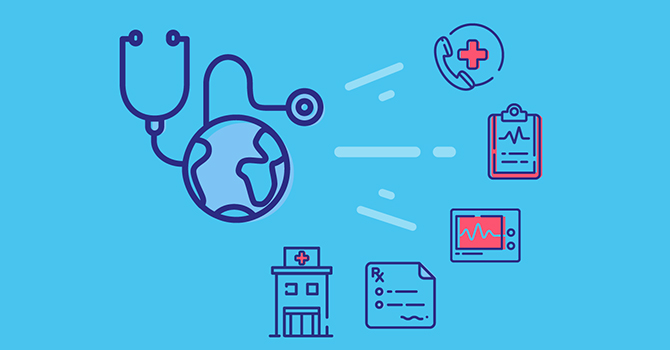The Significance of Healthcare RCM in Enhancing Cash Flow and Efficiency
The Significance of Healthcare RCM in Enhancing Cash Flow and Efficiency
Blog Article
A Comprehensive Guide on How Health Care RCM Works to Simplify Billing and Collections
Browsing the intricacies of medical care income cycle monitoring (RCM) is important for carriers intending to enhance their invoicing and collections procedures. The overview unboxes the intricacies of RCM, from individual registration to accounts receivable management, offering insights into enhancing each action.
Recognizing Income Cycle Administration
Understanding the details of Revenue Cycle Management (RCM) is essential for medical care companies aiming to enhance their financial performance. RCM is a critical administrative function that includes the whole financial procedure of individual care, from the first appointment establishing to the final repayment of the equilibrium. It is a complicated procedure developed to recognize, accumulate, and take care of the revenue from the solutions offered to patients. Effective RCM ensures that medical care service providers obtain prompt and exact payments, minimizing the risk of income loss and improving cash money flow.
The RCM procedure starts when a client routines a visit and extends with the client's treatment journey, including payment and collections. A vital objective is to minimize the time between providing a service and obtaining repayment, therefore boosting the company's economic health. RCM involves different features such as individual enrollment, insurance verification, cost capture, coding, asserts entry, payment posting, and managing rejections and appeals.
Trick Components of RCM
In the world of Earnings Cycle Management (RCM), understanding its crucial components is essential to attaining economic efficiency within health care companies. RCM is a detailed procedure that includes different stages, each important to ensuring effective invoicing and collections. The main elements include individual enrollment, insurance policy confirmation, fee capture, coding, case submission, settlement publishing, and balance due monitoring.


Once coded, claims are submitted to payers, where precision is paramount to prevent hold-ups or rejections - Healthcare RCM. Settlement uploading entails videotaping the obtained settlements, which permits the settlement of accounts. Lastly, accounts receivable management concentrates on tracking and addressing unpaid cases, guaranteeing timely follow-up and resolution
Each element of RCM is adjoined, and ineffectiveness in any type of part can interrupt the whole cycle. Consequently, understanding these elements is necessary for medical care suppliers to enhance income and enhance their financial health and wellness.
Approaches for Efficient Billing

Systematizing invoicing treatments throughout the company is another key strategy. Establishing clear standards for documents, coding, and submission helps maintain uniformity and compliance with governing requirements. Training team frequently on these procedures ensures every person is updated with the most recent changes in payment codes and payer policies.
Accurate cost capture is necessary in protecting against earnings leak. Carrying out routine audits and surveillance systems enables for the recognition and adjustment of disparities before they influence profits. Additionally, preserving open lines of interaction with payers assists to rapidly fix any conflicts or misunderstandings that might develop.

Lastly, appealing clients early in the billing process by giving clear quotes and academic materials regarding their financial obligations can considerably decrease complication and enhance repayment timeliness. These methods collectively add to a much more reliable and financially healthy and balanced invoicing system.
Enhancing Collections Processes
A durable collections procedure is crucial for maintaining monetary security within healthcare companies. Given the complexities of clinical invoicing and the variety of payer demands, enhancing the collections procedure includes carrying out calculated procedures that make certain prompt and accurate repayment of solutions rendered. Central to this is making use of modern technology to automate and improve procedures, lowering manual errors and enhancing effectiveness. Automation devices can aid in tracking claim conditions, sending prompt suggestions to clients, and taking care of rejections better.
Clear and clear patient interactions are essential. Offering detailed explanations of costs and offering versatile repayment plans can boost individual fulfillment and punctual settlements.
Regular audits of the collections process should be carried out to determine locations for renovation and guarantee conformity with regulations. By examining information, healthcare organizations can recognize trends, expect possible issues, and adjust strategies appropriately (Healthcare RCM). Ultimately, a well-enhanced collections procedure not only sustains economic health and wellness yet also adds to a much more web link seamless experience for individuals and staff alike
Optimizing Income Streams
Structure upon the foundation of a solid collections process, medical care companies can better bolster their monetary security by purposefully optimizing profits streams. This entails a multi-faceted approach, beginning with a thorough analysis of existing income resources to recognize inefficiencies and areas for growth. Utilizing innovative information analytics devices enables organizations to obtain insights into payer mix, individual demographics, and service utilization patterns, permitting data-driven decisions that boost income capture.
Executing automated billing systems can significantly minimize errors and quicken claims refining, guaranteeing that revenue is collected a lot more efficiently. Moreover, maximizing payer agreements via routine arrangements can boost repayment prices and terms, directly impacting the bottom line. Expanding solution offerings, such as integrating telehealth or health programs, can likewise draw in a wider patient base, hence raising earnings capacity.
One more vital element is enhancing client engagement and complete satisfaction, as satisfied clients are most likely to abide by treatment strategies and make prompt payments. Offering adaptable repayment options and clear payment methods can improve collections and foster person commitment. Healthcare RCM. By adopting these strategies, health care organizations can create an extra resistant monetary framework, making certain sustained development and stability in an ever-changing sector landscape
Final Thought
In conclusion, health care Revenue Cycle Administration (RCM) plays a vital role in maximizing payment and collections processes by integrating vital elements such as patient enrollment, insurance policy confirmation, fee capture, coding, claims click to read entry, and balance due management. By employing sophisticated technology, standardizing treatments, and fostering individual involvement, healthcare providers can substantially reduce claim rejections, increase payment cycles, and improve money circulation. This comprehensive method to RCM inevitably leads to boosted economic efficiency and sustainability for health care organizations.
The RCM procedure starts when a patient schedules a visit and extends through the client's treatment trip, consisting of payment and collections.Another important part is enhancing client interaction and satisfaction, as satisfied clients are a lot more most likely to stick to therapy strategies and make prompt payments. Full Article Providing versatile repayment choices and clear payment practices can improve collections and foster patient loyalty.In conclusion, health care Profits Cycle Management (RCM) plays a critical role in optimizing invoicing and collections processes by incorporating key elements such as individual enrollment, insurance coverage confirmation, charge capture, coding, claims submission, and accounts receivable monitoring. By employing sophisticated innovation, standardizing treatments, and cultivating person involvement, health care suppliers can dramatically minimize claim rejections, increase repayment cycles, and enhance cash money circulation.
Report this page